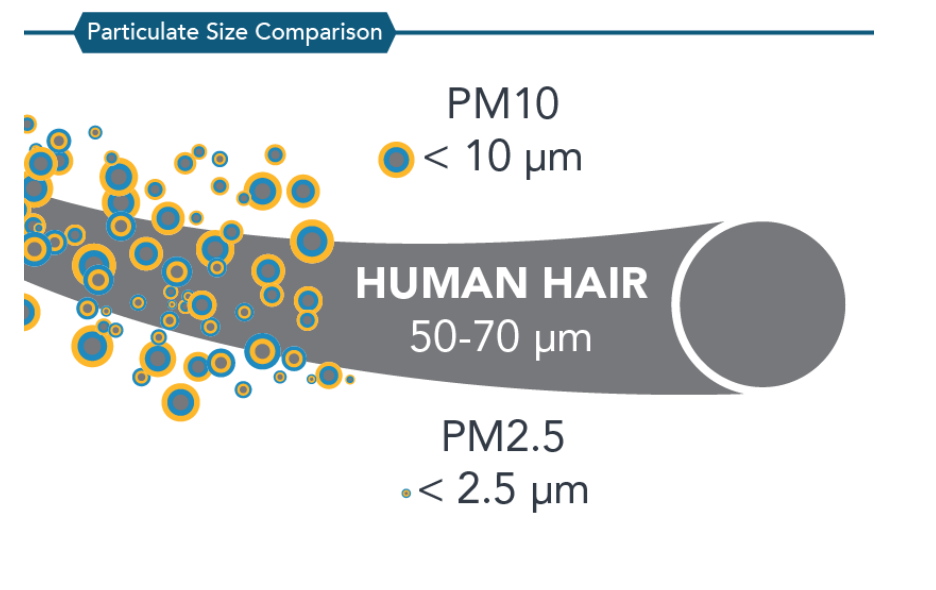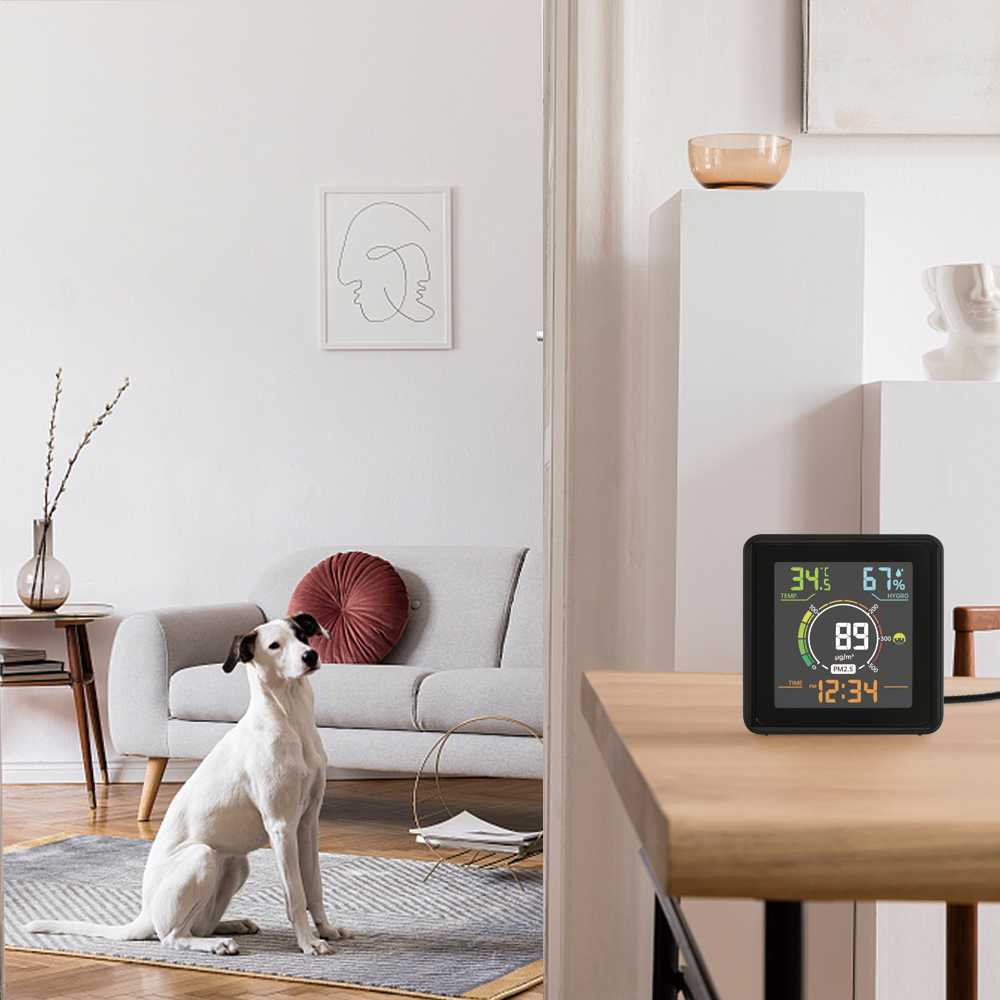What exactly is PM 2.5?
PM 2.5 is a category of particle pollution with a size of 2.5 microns or less. A human hair has a cross-section of 50 microns on average. “Particulate matter” is the abbreviation for “particulate matter.” Because different sizes of particles have varied health consequences, the EPA and many health organizations categorize particulate matter by size. PM 10 particles, for example, can irritate your nose and eyes, but because fewer of these particles penetrate deep into your lungs, they do not cause the same health problems as smaller micron particles, even though they can increase respiratory disease rates.

What is the size of a PM 2.5 particle?
Particles with a diameter of 2.5 microns or less are particularly hazardous to human health because they evade several of the body’s defenses. Smaller particles are caught by nose hair, mucus, and other defenses before they reach deeper into our systems. PM 2.5 particles, on the other hand, can enter our lungs, where they can reach the alveoli and then enter the bloodstream.
PM 2.5 particles are complicated because they can be made up of a wide range of chemicals and particles, and they might be partially liquid rather than solid, as a typical dust particle is. Aerosols are particulate contaminants that are completely or partially made up of liquid droplets. Dust, sea salt, and volcanic ash are examples of natural aerosols, whereas man-made sources include industry and automobile emissions, coal combustion, and biomass burning for land clearing or farming.
What are the causes of PM 2.5?
PM 2.5 pollution can arise from a wide range of sources, making it a very complicated sort of pollution. Some PM 2.5 sources directly emit the particles. Wildfires, some power plants, and industrial activities are examples of “primary sources.” Secondary PM 2.5 particles, on the other hand, are created when various substances react in the air. Chemicals from coal power plants or automotive exhaust can mix with atmospheric water vapor and sunlight to generate new particles or compounds, which can be as small as 2.5 microns. Because of the numerous methods in which particles are produced from chemical compounds, as well as the numerous variables such as area, weather, climate, and human activity, knowing exactly what chemicals are present in PM 2.5 particles on any particular day can be practically difficult.
Even if the outside air is clean or if you have shut the windows on a bad day, there are several interior sources of PM 2.5 that might harm your health. Wood and coal fires, cooking odors, and even candles are common indoor sources.
What makes PM 2.5 so dangerous?
Increasing the amount of PM 2.5 particles in the air has been linked to a number of negative health effects, including an increased incidence of respiratory disease, a worsening of respiratory disease symptoms, and cardiovascular effects that can lead to heart attacks and death, according to a number of studies.
Because of how these particles interact with the body when they enter the lungs, “passing through the filtration of nose hair, reaching the end of the respiratory tract with airflow and accumulating there by diffusion, and damaging other parts of the body through air exchange in the lungs,” PM 2.5 can have far-reaching and long-term effects. Yu-Fei et al. (2016) [Yu-Fei et al., 2016]. PM 2.5 is particularly hazardous since it is extremely difficult to remove from the body, making prevention the best option. PM 10 can, on the other hand, be exhaled through coughing and sneezing. PM 2.5 is unable to do so.
“Exposure to PM 2.5… over a few hours to weeks can trigger cardiovascular disease-related mortality and nonfatal events,” according to a 2010 study. “Longer-term exposure (e.g. a few years) increases the risk of cardiovascular mortality to an even greater extent than exposures over a few days and reduces life expectancy… by several months to a few years.”
While particulate pollution is harmful to everyone, certain populations are more vulnerable than others, according to the CDC. These particles have a greater impact on people who have heart or lung problems, the elderly, newborns, and young children. When exposed to high quantities of PM 2.5, those with heart problems can feel rapid symptoms.
PM 2.5 has a global influence.
The WHO estimates that air pollution “kills an estimated seven million people worldwide every year,” and their data “shows that 9 out of 10 people breathe air containing excessive levels of contaminants.”
PM 2.5-related pollution has wreaked havoc on Asian countries in particular. Between 1990 and 2010, the projected PM 2.5-related deaths in East and South Asia “rose by 21% and 85%, respectively.”
Population growth and migration fueled by economic forces, as well as a lack of air pollution regulations and enforcement, have all contributed to this rapid increase.
India has been particularly hard hit. According to NASA satellite data on PM 2.5, “more than 4 in 10 Indians are exposed to 5 times the permissible limit of particulate matter in the air they breathe,” according to the Financial Times. In November, when “hazy skies are a typical occurrence” and winds pour a “river of smoke across most of the Indo-Gangetic Plain,” Delhi has become known for its crop-burning season. According to statistics obtained at the US Embassy, the ensuing haze has “pushed levels of fine particulate matter (PM2.5) to hazardous levels in Delhi.”
This contrasts sharply with situations in Europe and North America, where “correlations between population and PM2.5 have gotten weaker due to air pollution restrictions but stronger in East Asia due to declining air quality” over the last two decades.
Following these findings, scientists have concluded that actively reducing “principal PM” sources “appears to be the most efficient strategy for improving health benefits (i.e., giving the largest mortality reduction per unit emissions).” (Wang et al., 2017; Wang et al., 2018).
When you’re indoors, how can you protect yourself against PM?
Staying indoors if PM 2.5 levels are high outside is a significant approach to decrease your exposure. You should also close the windows (and close the doors as much as possible) and turn on the air conditioner.
A good technique to know particle pollution in your home’s air is to use a PM2.5 Monitor.

GZAIR PM2.5 Detector
Using Electrochemical technology, GZAIR PM2.5 Monitor can detect tiny particles as well as monitor airborne pollutants (particularly, volatile organic compounds).
PM 2.5 is a potentially deadly class of air pollutants, so it’s crucial to know what it is, where it comes from, and how to deal with it. You can reduce your exposure to PM 2.5 by monitoring outdoor air quality and adopting a few simple precautions at home.

Leave A Comment